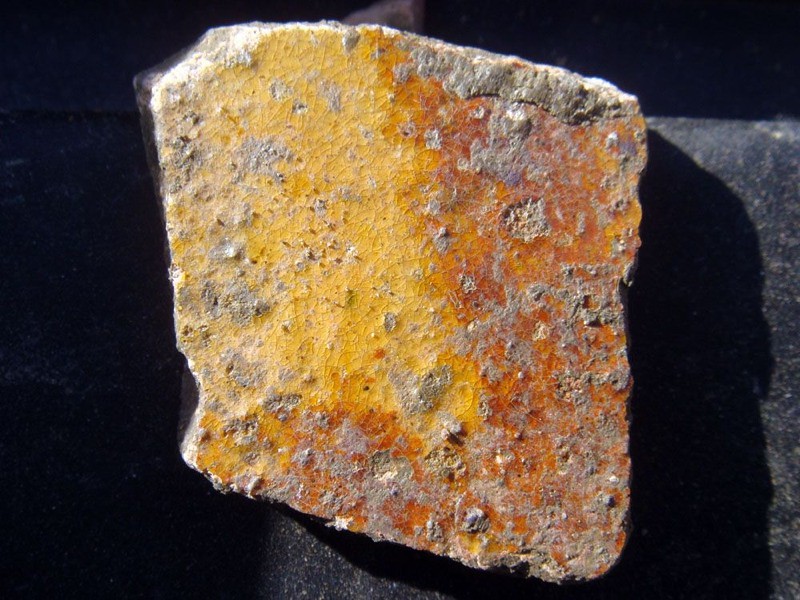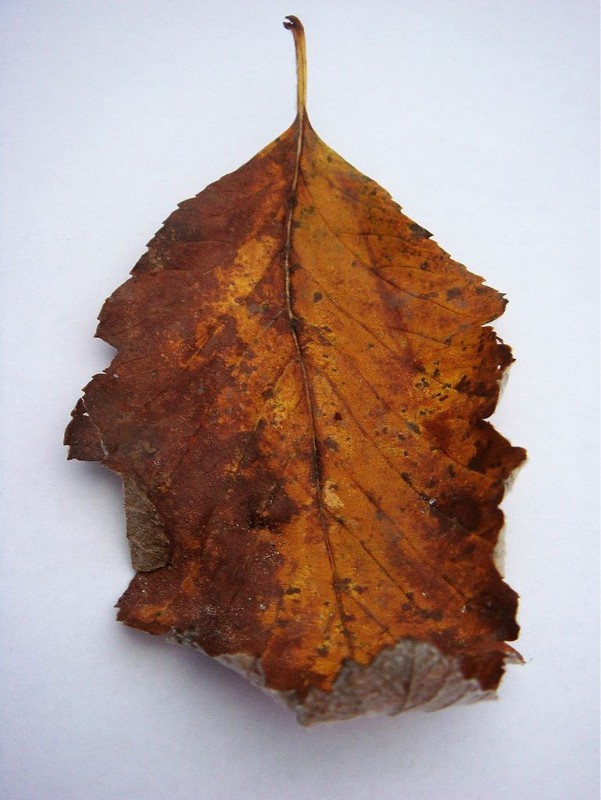Out of a small pile of earth, greyish-brown in colour, a piece of brightly glazed pottery appeared as I scraped with my trowel. Although only a few centimetres across it was nonetheless striking given the colours of its glaze; an orangey-yellow and warm reddish-brown, as vivid perhaps as when it was a whole piece of pottery in use however many centuries ago.

Colour, in this example, becomes for me a vehicle for a more empathetic engagement with the past (a theme central to my work). The colour of the sky, the apples on the trees, the trees themselves and the grass were one with the colours of this small fragment of pottery, which until that moment had remained hidden for (perhaps) hundreds of years. It was as if, rather than a shard of pottery, a piece of colour (or colours) from a day hundreds of years ago had lain buried in the soil; colours which at once melted back into the world from which they’d been estranged so long .
Pulling this shard from the almost monochromatic soil, was like looking at an old black and white photograph, where one imagines colour then movement. And looking up at the chapel, at the world moving all around me, I could, in that split second, glimpse the mediaeval past, acknowledging that that distant time was (although very different) just like the world today; there were colours and movement, experienced by individuals just like me and whoever had used whatever the fragment had once been a part of.
A little later as I continued to dig, I found a leaf inside my trench which had blown in from the side. The colours were very similar to that of the pottery (although they have darkened since). And once again this link between the past and present came to the fore. I was thrown back to a mediaeval autumn and imagined autumn in that very spot centuries ago. Like a chain reaction, I imagined the buildings, the road nearby, the walk into town. What was Oxford like at the time as the world moved towards the winter?

This single leaf (pictured above) is pregnant with the passage of time, the unrelenting march of time through another year, towards its end. The colours are like a sunset; the end of a year, the end of a day. But after night comes morning and after winter, the promise of spring. This idea of a continuous cycle seems embodied in both the leaf and the shard. One is young, the other very old – they turn or move in different ‘orbits’ – but nonetheless, in their colours, they have something in common; something I have in common with the individual who owned the pottery (from which the fragment comes) centuries ago; that is, we are part of the same world.